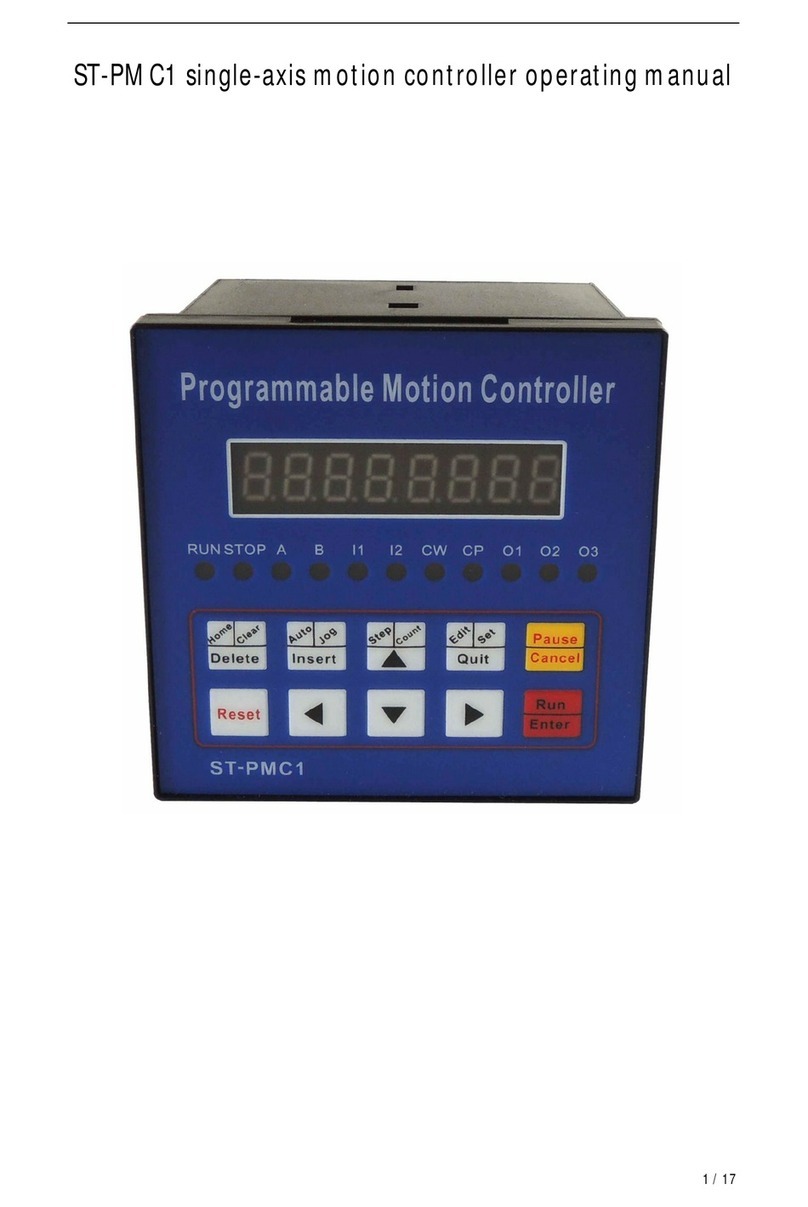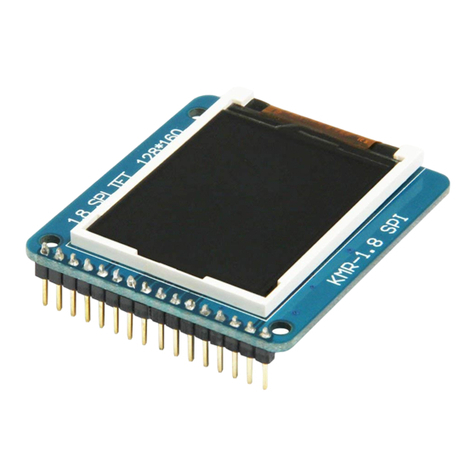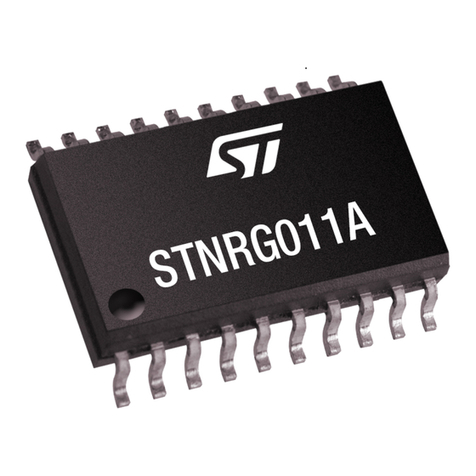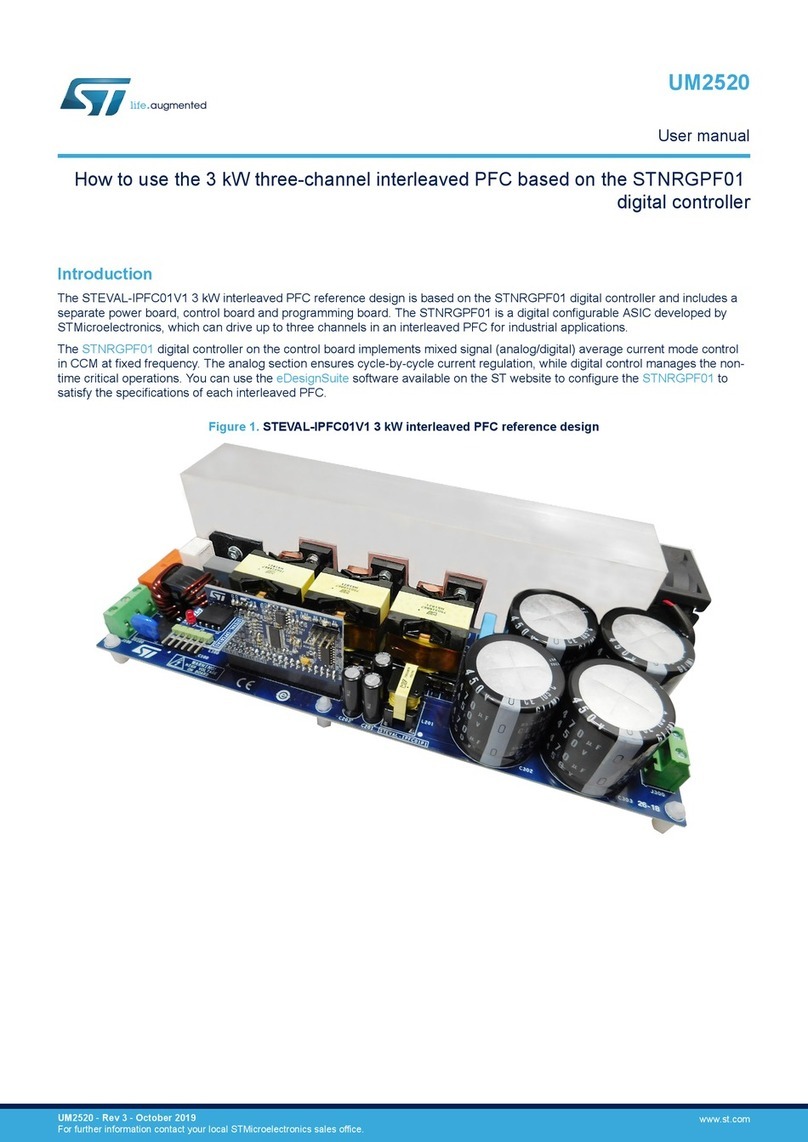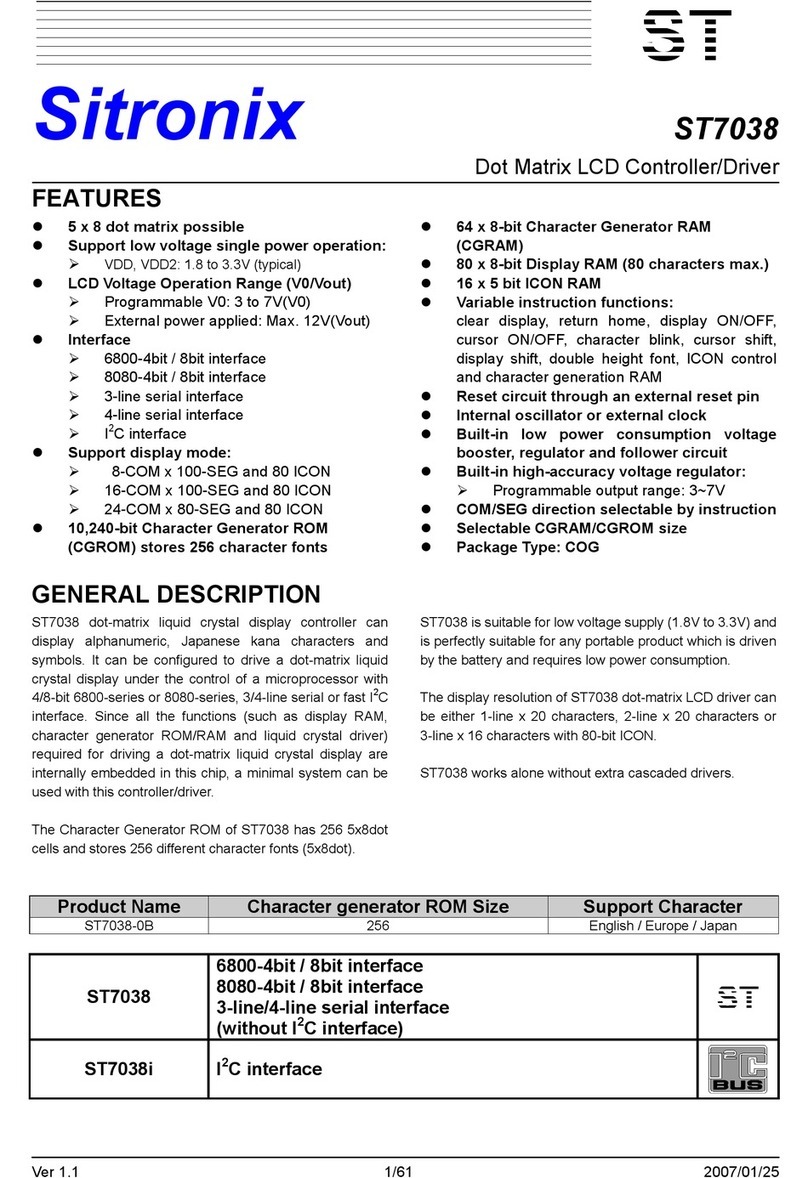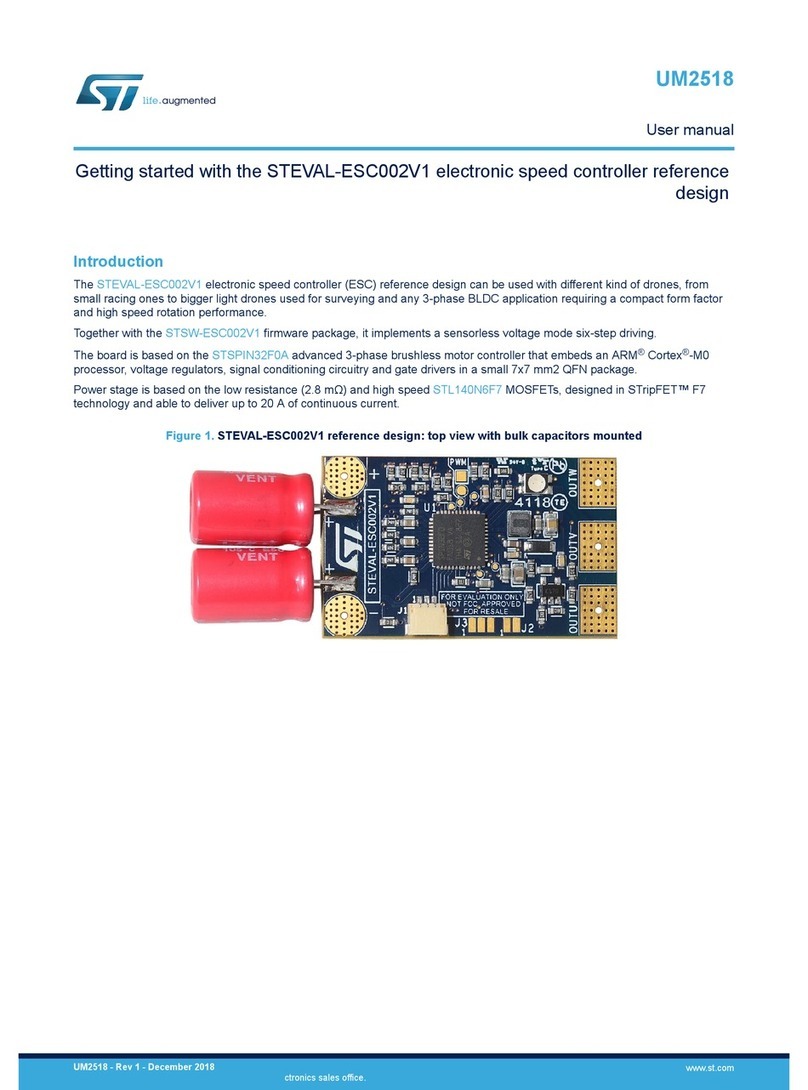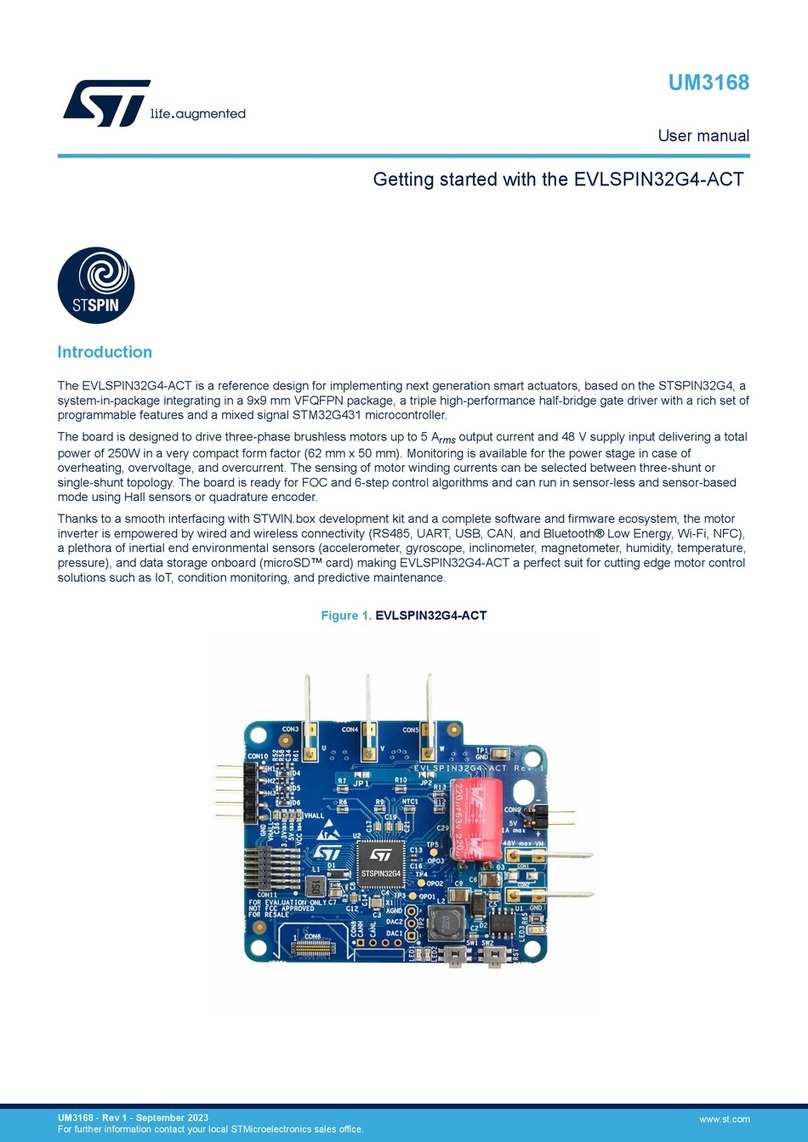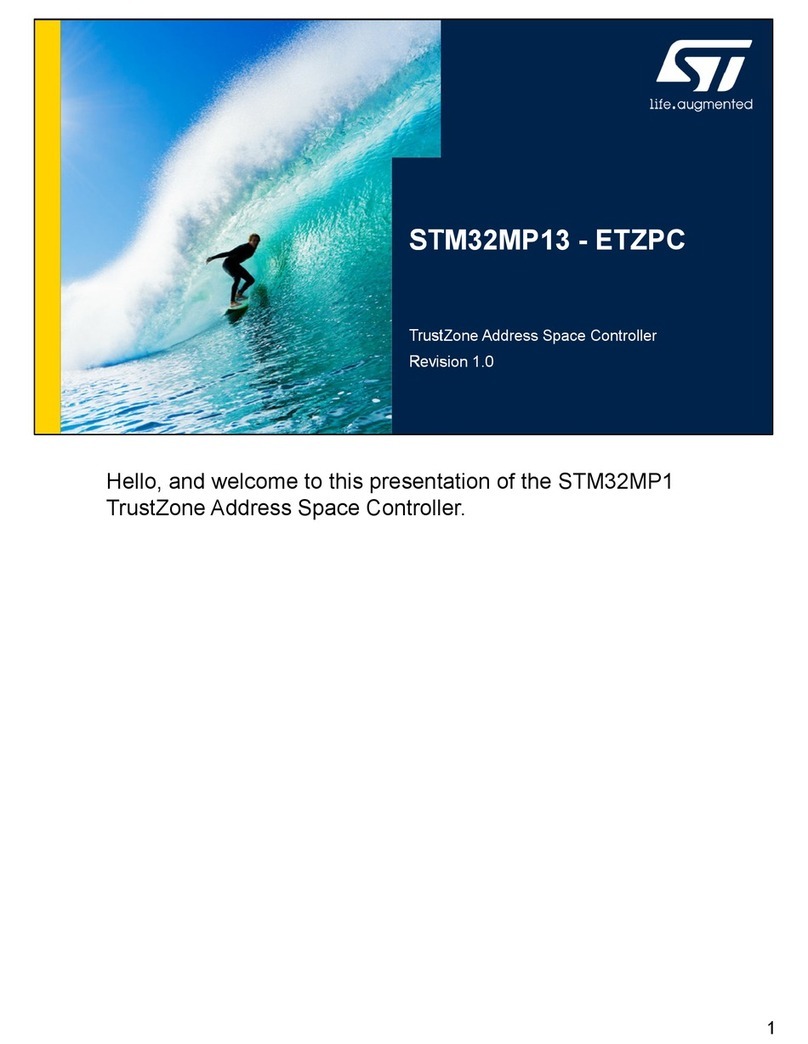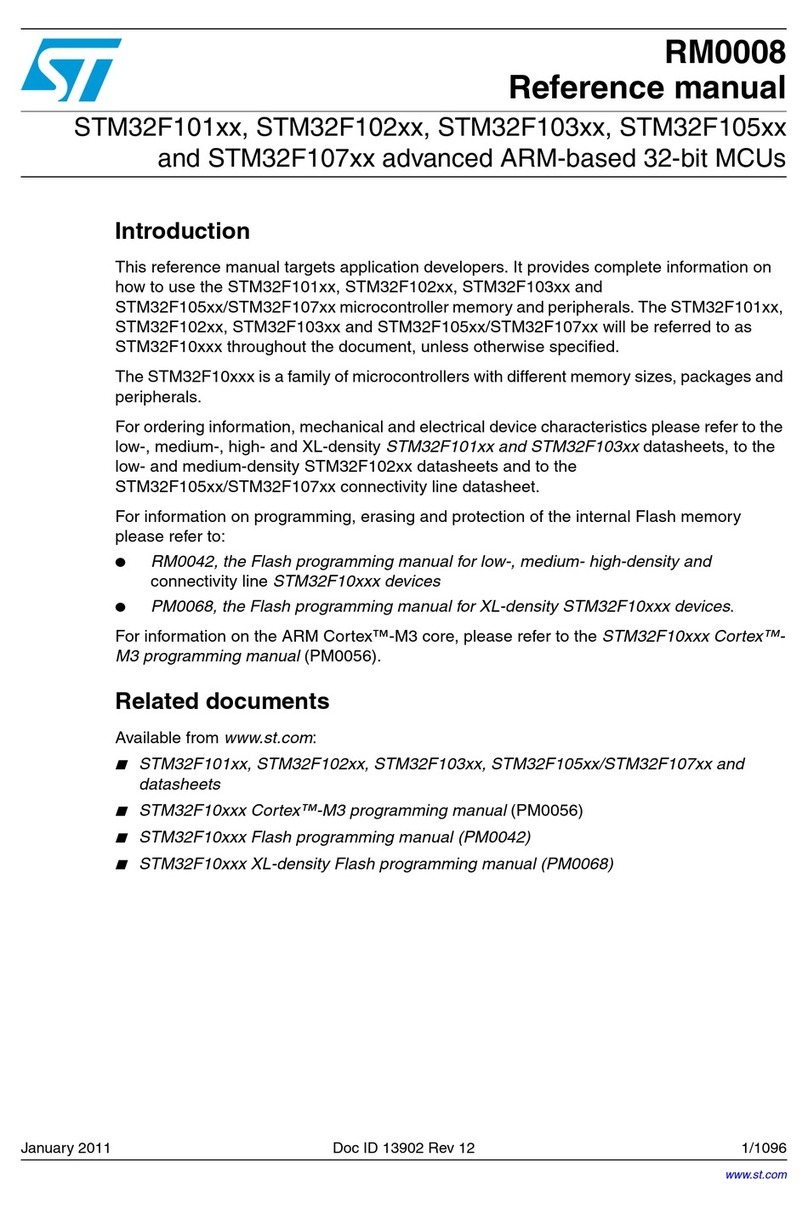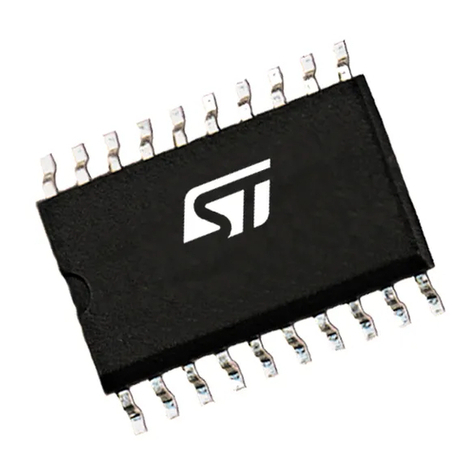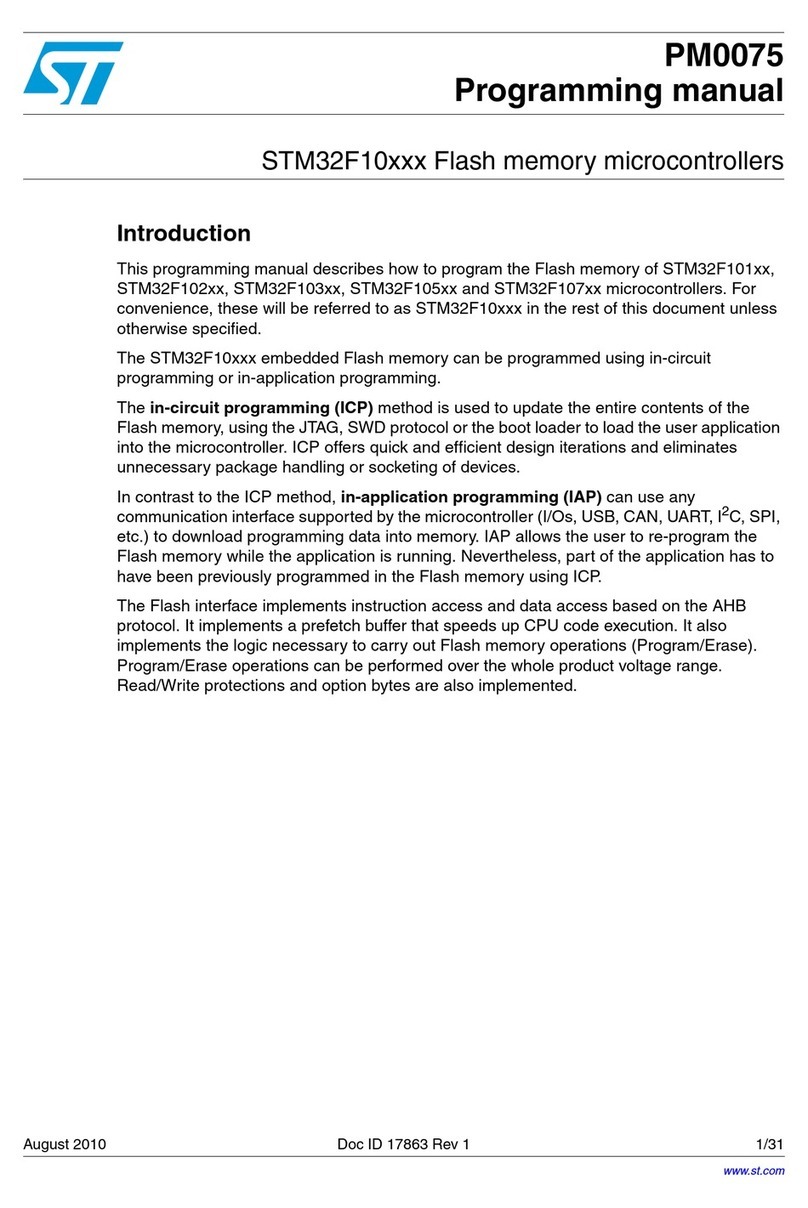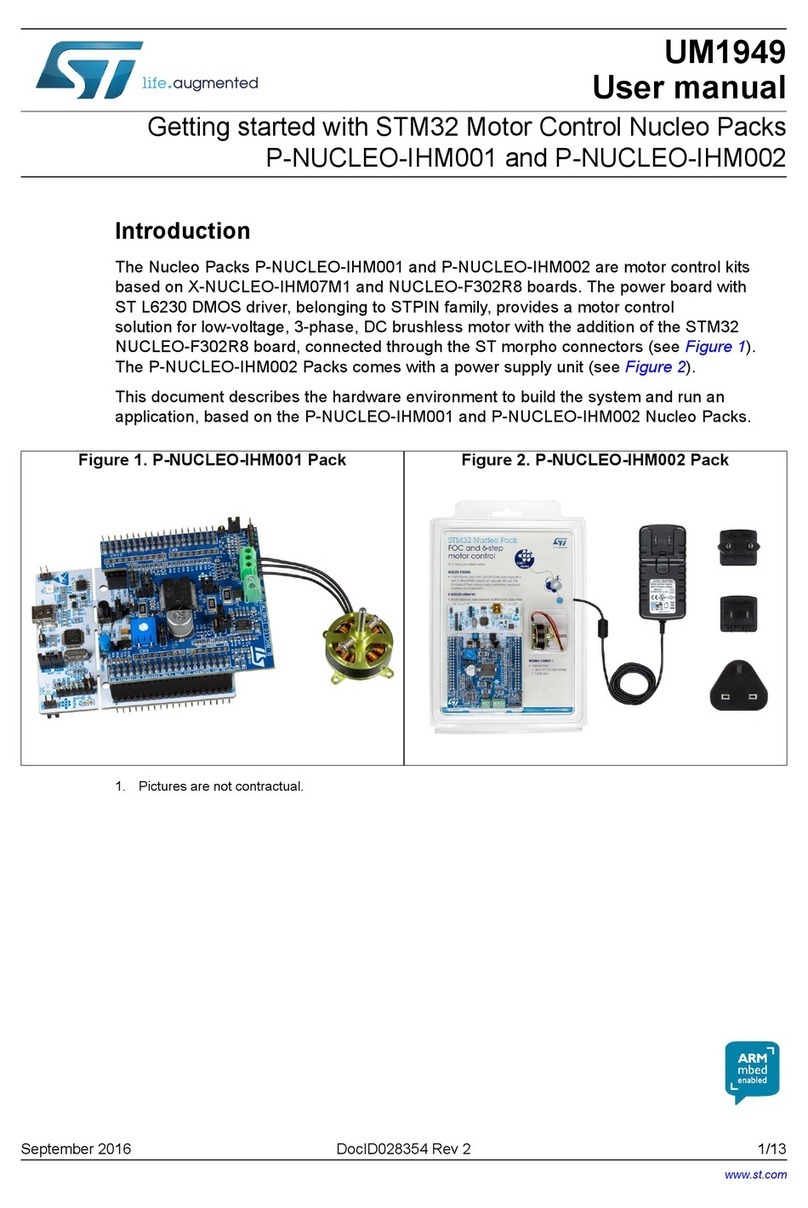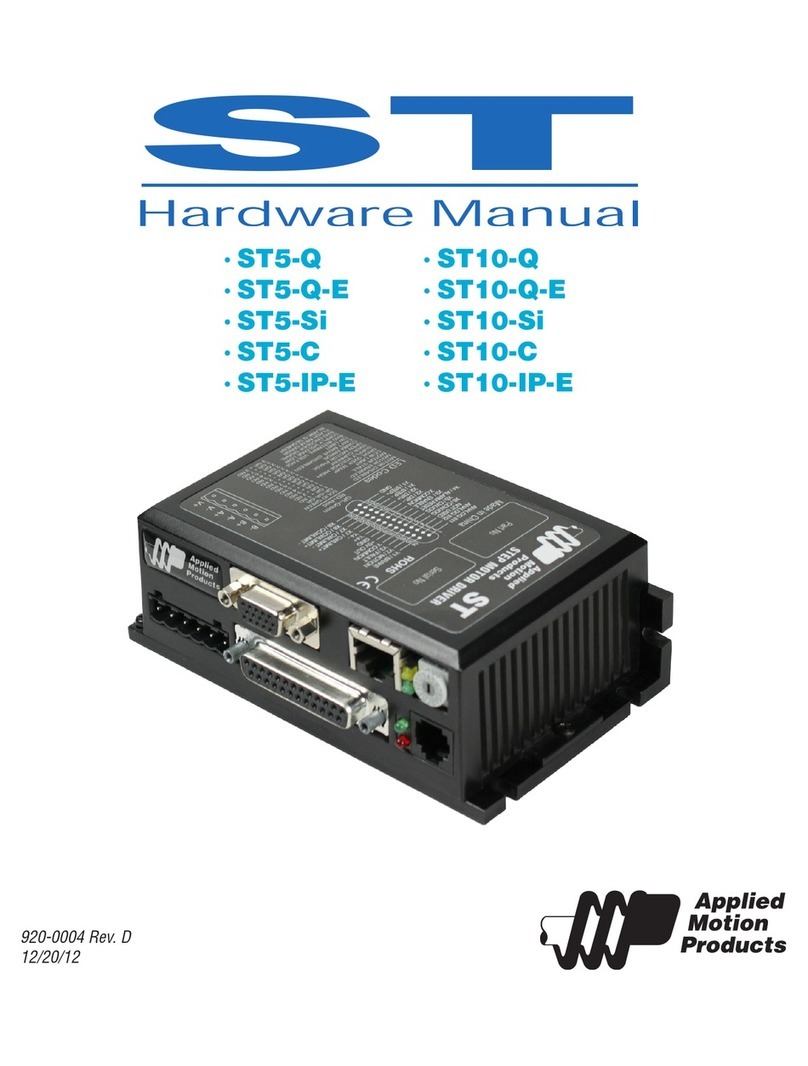
1.2.3 Connectors and test points
VIN: connect to the positive terminal of a supply voltage (from 6 V to 38 V with default 5 V VOUT). The input
voltage is filtered (see Section 1.2.4: Input EMI filter) to decrease the EMI. The supply voltage should be set with
a current limitation compatible with the power board request.
Typically:
Ilim >VOUT
VIN ⋅ IOUT
GND: return of the terminal of the input and output capacitors.
VOUT: connect to the positive terminal of the active load or to a power resistor between VOUT and GND.
Important: For all the above connections, short wires are recommended to avoid oscillation between the cable parasitic
inductance and the input capacitor.
CLKIN: input pin. The pin allows synchronizing the device by applying an external signal generator. Refer to the
AC coupling synchronization paragraph of the online datasheet.
GND: signal GND.
EN: input pin. The pin allows enabling the device. It allows also synchronizing the device by applying an external
signal generator. Refer to the DC coupling synchronization paragraph of the online datasheet.
PGOOD: output pin. It is an open collector. It is short to GND once VOUT is lower than the regulator window
(10%). Otherwise, it is short to the VOUT voltage.
1.2.4 Input EMI filter
The STEVAL-A6983NV1 is compliant with CISPR16-4-2.
The suggested input filters help to reduce EMI.
The network consists of a double Pi filter with an inductor (L2), a ferrite bead (L5), MLCC capacitors (C18, C19,
C20 and C30), and an electrolytic capacitor used for a bulk energy storage.
1.2.5 Switching frequency settings
By default, the switching frequency is equal to 400 [Khz]. It is possible to select the preferred switching frequency
by selecting the resistor connected between ground and the RFSW pin, R8.
Table 1. Switching frequency settings
R8 [KΩ] Fsw [MHz]
1.8 0.2
0 0.4
3.3 0.5
5.6 0.7
10 1
18 1.5
33 2
56 2.3
The spread spectrum is selectable by connecting the RFSW resistor to VCC. The internal dithering circuit
changes the switching frequency in a range of ± 5%. Refer to the online datasheet for the spread spectrum full
description.
UM3094
Getting started
UM3094 - Rev 1 page 3/52






